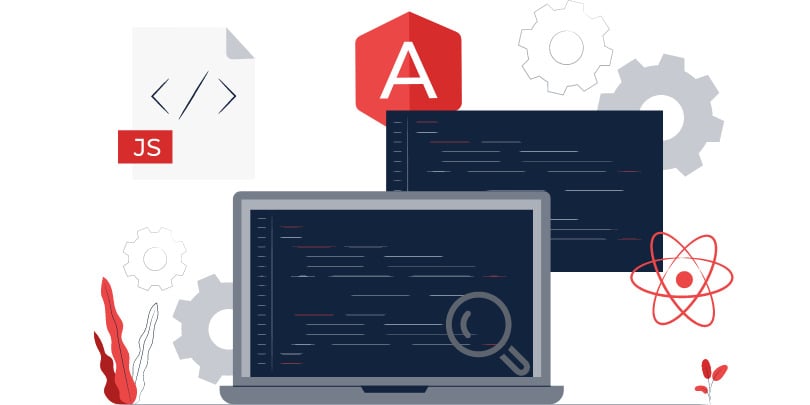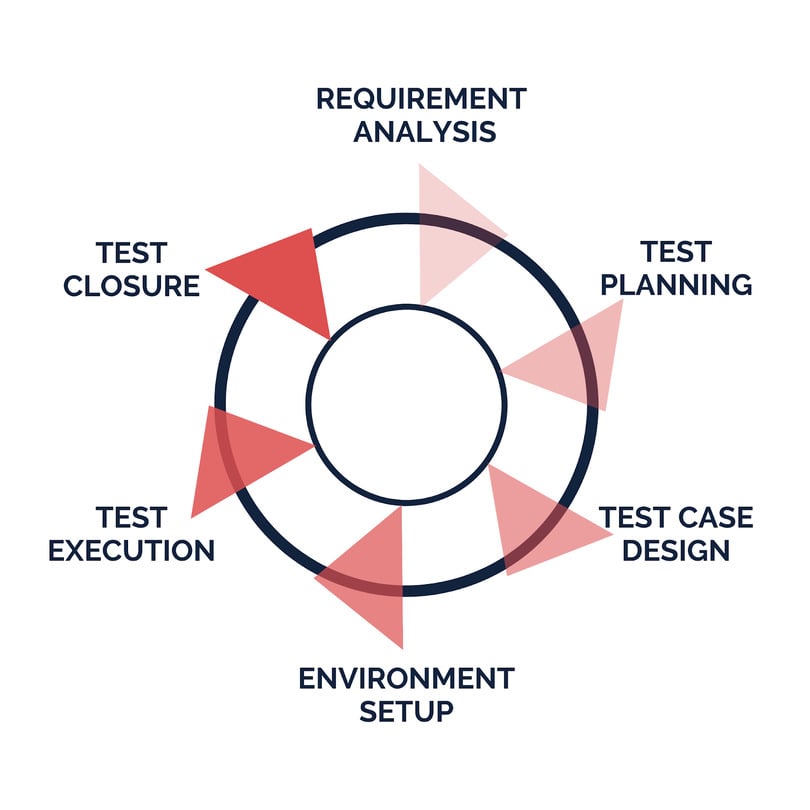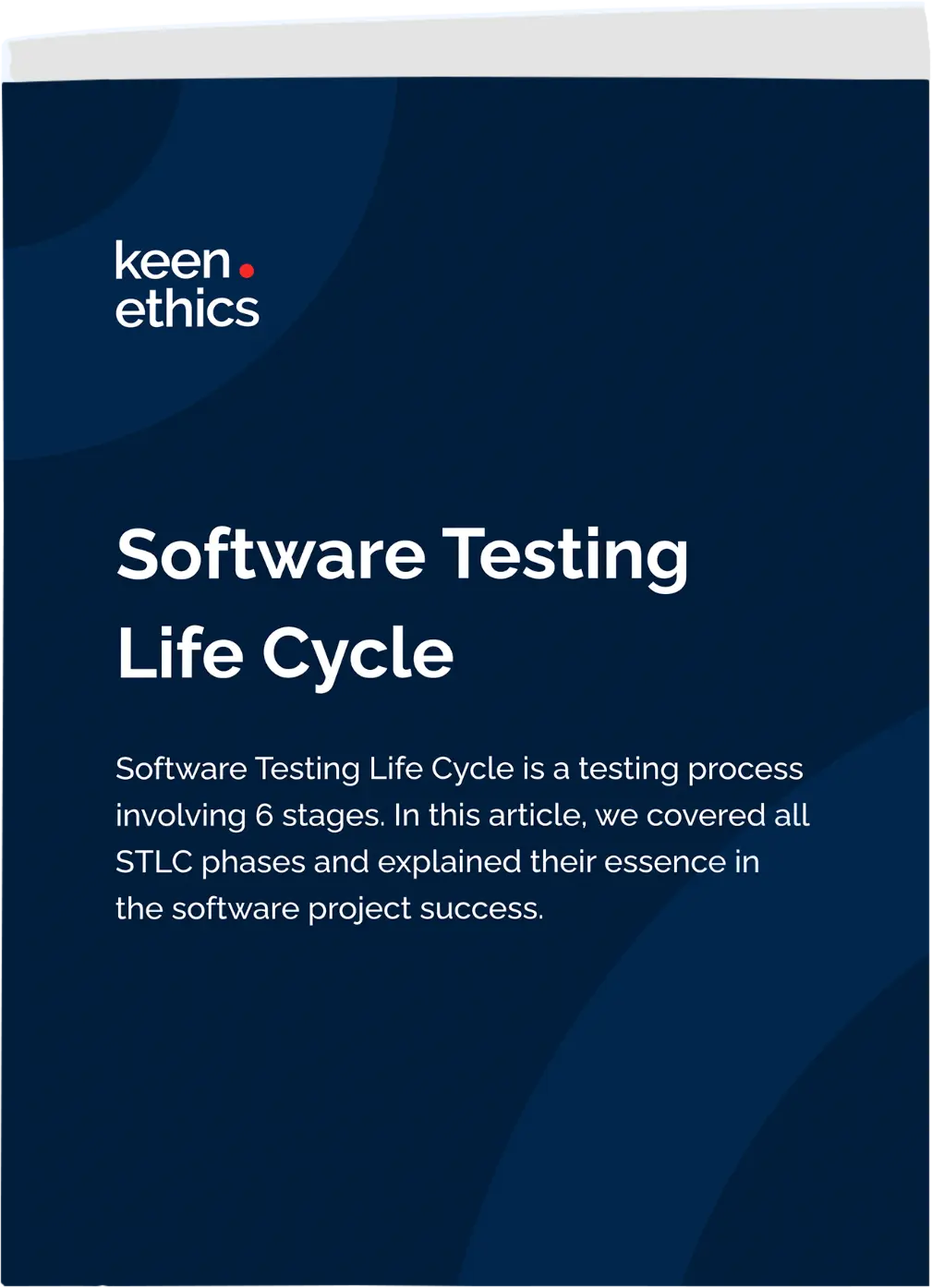I’m almost a hundred percent sure that, once you hear the phrase “the circle of life”, you immediately recall the good old movie “The Lion King”. You might have wondered why I decided to use these words in the article title. I’ll tell you everything later. First, let me start with the following:
• What is software testing?
• What is a software testing life cycle, and what stages does it consist of?
What is Software Testing?
Software testing (also referred to as Quality Assurance) is the process of checking software quality: its performance, reliability, and adherence to project requirements.
According to TEST INSTITUTE, “Software Testing is the Science and Art of delivering Software Products and Solutions to the end-customers with utmost possible Service Quality and with minimal interruption in Business Processes and Services.”
Overall, QA specialists make sure that the software solution meets predefined functional and non-functional requirements and eliminates any software defect.

What is Software Testing Life Cycle?
Software testing life cycle is a continuous and consistent process of Quality Assurance; it is the flow of a testing process. There aren’t many different types of software testing life cycle – just two, actually. Usually, the life cycle model in software testing involves a set of 6 steps that need to be completed for a certain feature or the product, in general, to be considered as tested. Sometimes, the sixth stage is omitted.
Entry and Exit Criteria in the STLC
STLC phases involve entry and exit criteria. The entry criteria refers to the conditions that should be addressed before performing the test. In other words, this criteria is closely related to the purpose of the test. Exit criteria, in turn, relates to the conditions that should be taken into account before the test is completed. Each of the stages of the QA life cycle listed below has entry and exit criteria.
Check our article “How to Write QA Documentation That Will Work?”. The explanations we offer are simple, and the examples are super clear.
6 Key Software Testing Life Cycle Phases
There are 6 stages of the QA life cycle:
- Requirement analysis
- Test planning
- Test case design
- Test environment setup
- Test execution
- Test closure
Requirement analysis
Entry criteria: A certain part of the project scope needs to be implemented, the Requirement Specification and Acceptance Criteria need to be available.
Requirement analysis is the first stage of the software testing life cycle. The goal of this STLC is to identify all the requirements that must be tested during this particular cycle.
At first, a Quality Assurance specialist prepares a list of questions about requirements to be tested. Then, they consult with the development team and a Project Manager, Product Owner, Business Analyst – whoever understands the requirements best. The goal of this consultation is to perfectly understand a particular functional or non-functional requirement. For instance, they clarify how fast the app should load or how the login process should be organized. After all, they define testing strategies.
Exit criteria: The Quality Assurance team understands the requirements, the list of testable requirements is prepared.
Test planning
Entry criteria: A summary of the requirements to be tested must be prepared.
A well-known saying has it “Measure Twice, Cut Once”. Indeed, planning is integral to project success. Test planning is the second stage of the software testing life cycle. The goal of the given STLC is to formulate a strategy according to which a certain requirement will be tested. The QA specialists of the QA team lead has to:
• analyze requirements gathered at the previous stage,
• list testing types that will be applied,
• select testing tools,
• list the deliverables,
• define risks,
• compile a testing timeline
• assign testing tasks to the team
Exit criteria: The testing plan is created; the following questions are answered: what will be tested, by whom, when and how long, and what resources are needed?
Please note that this is an estimate based on the information provided. The actual cost may vary depending on the specific requirements and complexities of your project. Start planning your software project today with our cost estimator.
Test case design
Entry criteria: A summary of the requirements and a test plan have to be prepared.
Test case design is the third stage of the software testing life cycle. This STLC is aimed to have test cases prepared. Basically, if test planning formulates a strategy, test case development formulates a tactic. Test cases are created on the basis of various techniques of test design (Equivalent Class Partitioning, Boundary Value Analysis, State Transition, Pairwise Testing, and Error Guessing).
A Quality Assessment specialist has to create test cases:
• assign a unique ID,
• name a test case,
• outline testing steps,
• outline the expected results,
• leave sections for status, actual results, and comments.
Exit criteria: Test cases have to be prepared.
Test environment setup
Entry criteria: A test plan should be ready.
The environment setup is the fourth stage of the software testing life cycle, which, however, can be conducted in parallel to test case development. The idea of it is to prepare the test environment: servers, hardware product, software product, and test data. Once the testing environment is prepared, a testing team conducts smoke testing to make sure that everything works as it should.
Exit criteria: The test environment needs to be set up and checked.
Look through my recent article “How to Find Your Way Around Different Types of Software Testing?” to find out more about these and other software testing types and life cycle models in software testing.
Test execution
Entry criteria: Requirements specification, test plan, test cases, and test environment are provided.
Test execution is the fifth stage of the software testing life cycle – the stage where all the magic happens. Here, according to a test plan, a QA specialist executes test cases in a certain test environment to check if the requirements outlined in the first stage are met. At this point, each test case has a status identified:
• passed – the test case is completed successfully;
• failed – the test case is completed unsuccessfully;
• in progress – the test case is not completed yet;
• blocked – the test case can’t be completed because of some bug or error.
For all the identified bugs, a QA compiles a report on defect distribution. After all the identified bugs are fixed, QA specialists recheck them – this continues until all the errors are solved.
Exit criteria: Test case report has to be compiled.
Test closure
Entry criteria: Test case report is provided.
Test closure is the final stage of software testing. Here, the QA team analyzes the software testing life cycle, evaluates their own performance, and prepares a test closure report. It may feature mistakes that need to be avoided in the future or best practices that can be reused.
Exit criteria: Test closure report has to be compiled.
STLC – The Circle Of Life

Once you complete the cycle of unit testing, you proceed to integration testing. When this cycle is completed, you start a new one for the system testing. If this is over as well, you launch an acceptance testing cycle. Each time a new feature is added, you have to start with user testing again. You go circles and circles to make sure that the app is impeccable.
Unless the application, should it be web or mobile, is properly tested, it can’t be delivered to the end-user. A software solution that lacks proper software testing definitely contains bugs. In the best-case scenario, the app layout would be flawed, and images or text blocks would overlay. In the worst-case scenario, sensitive user data would be leaked.
Today’s software market is so overcrowded that it seems like you can’t have a single error in your web or mobile app. According to Statista, at the end of 2019, there were about 2,570,000 apps on Google Play and 1,840,000 apps on the App Store. The WebsiteHostingRating states that there were 1,744,517,326 websites online as of January 1st, 2020. Still, the main aim of testing is to minimize errors, gaps or missing requirements. Testing all cases might not be always possible, and so, minor errors might remain.
Anyway, If you want your business to soar to the stars (of course, you do), your app has to succeed. For your app to live and flourish, you have to test it abundantly.

To Wrap Up
In this article, we have concluded that proper software testing is integral to software project success. The software testing should follow a certain procedure – six steps, each with predefined entry and exit criteria:
- Requirement analysis
- Test planning
- Test case design
- Test environment setup
- Test execution
- Test closure
These steps comprise a software testing life cycle – a circle, which repeats over and over again until the app perfectly meets all the requirements and is ready to meet the client. And this process is integral – without it, you are bound to lose the trust of your users.












